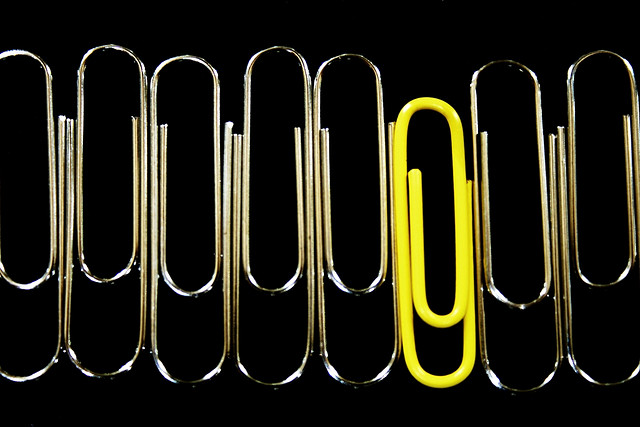Both inflation and expected inflation have both trended down recently. These movements may provide a signal for when the Fed may raise rates. Matt Tucker explains.
by Matt Tucker, Head of iShares Fixed Income Strategy, Blackrock
As my colleague Rick Rieder discusses in a recent post, the latest employment report tells us that the economy may be stronger than previously thought. Still, the Fed may be cautious on raising rates if inflation isn’t pushing above their target levels. Recall that the Fed operates under a dual mandate: to encourage economic growth and to also keep inflation contained. Subdued inflation would give the Fed the breathing room to keep short term interest rates low for a longer period of time, even in the face of an improving jobs market. In a sense, you can think of inflation as the cost of an accommodative monetary policy. Low interest rates should boost growth over time, but at the same time they risk triggering a rise in inflation. If inflation remains low, then the cost of low interest remains low.
For the most part, inflation was well contained over the past year, running right around the Fed’s target of 2% from April to July. In August however, the consumer price index (CPI) unexpectedly fell 0.2% from July’s level, despite economists’ expectation of no change. This was the first time that CPI had been negative in a given month since April 2013. Although inflation then rebounded +0.1% in September, it still remains at historically low levels.
Does this mean that inflation is beginning to decline? To get a sense let’s take a look at the breakeven inflation rate. This is the amount of inflation that investors have priced into the market in the future; it is measured by looking at the difference in yields on Treasuries and TIPS. We see that the expected level of inflation over the next 10 years has declined from 2.27% on July 31 to 1.90% on October 28th. If we look at shorter term inflation expectations, we see an even larger difference, as 2-year breakeven inflation has declined from 1.52% on July 31st to 0.88% on October 28th.*
If future inflation equals the breakeven rate, then an investment into a 10 year Treasury and a 10 year TIP would have roughly the same return. Thus it is the level of inflation that makes the two investments break even. There are several directions you can take, depending on your view of inflation:
- If you’re bullish on inflation, you might prefer TIPS. That’s because you could benefit if inflation exceeds the breakeven rate. In this case you could use a fund like the iShares TIPS Bond ETF (TIP) to get exposure to the broad TIPS curve.
- If you’re bearish, and believe inflation will end up below the breakeven rate, then you might prefer Treasuries. Here a fund like the iShares Core U.S. Treasury Bond ETF (GOVT) may be appropriate.
- If you want to position for inflation but want to manage interest rate risk, then you could use funds like the iShares 0-5 Year TIPS Bond ETF (STIP) for TIPS exposure and the iShares 1-3 Year Treasury Bond ETF (SHY) for Treasury exposure.
So how will the inflation story play out? Right now recent declines in realized inflation (as measured by the CPI) have led investors to expect lower rates of inflation in the US in the coming years. This is consistent with declining growth and inflation that we are seeing in other markets (most notably in Europe). Whether or not this stays the Fed’s hand and keeps short term interest rates low is yet to be seen. For now, movements in inflation expectations are a key indicator to watch when considering the Fed’s next move.
*Source: Bloomberg
Matthew Tucker, CFA, is the iShares Head of Fixed Income Strategy and a regular contributor to The Blog. You can find more of his posts here.
Carefully consider the Funds’ investment objectives, risk factors, and charges and expenses before investing. This and other information can be found in the Funds’ prospectuses or, if available, the summary prospectuses which may be obtained by visiting www.iShares.com or www.blackrock.com. Read the prospectus carefully before investing.
Investing involves risk, including possible loss of principal.
Fixed income risks include interest-rate and credit risk. Typically, when interest rates rise, there is a corresponding decline in bond values. Credit risk refers to the possibility that the bond issuer will not be able to make principal and interest payments. TIPS can provide investors a hedge against inflation, as the inflation adjustment feature helps preserve the purchasing power of the investment. Because of this inflation adjustment feature, inflation protected bonds typically have lower yields than conventional fixed rate bonds and will likely decline in price during periods of deflation, which could result in losses. Government backing applies only to government issued securities, and does not apply to the funds.
An investment in the Fund is not insured or guaranteed by the Federal Deposit Insurance Corporation or any other government agency and its return and yield will fluctuate with market conditions.
This material represents an assessment of the market environment at a specific time and is not intended to be a forecast of future events or a guarantee of future results. This information should not be relied upon by the reader as research or investment advice regarding the funds or any security in particular.
The Funds are distributed by BlackRock Investments, LLC (together with its affiliates, “BlackRock”).
©2014 BlackRock, Inc. All rights reserved. iSHARES and BLACKROCK are registered trademarks of BlackRock, Inc., or its subsidiaries. All other marks are the property of their respective owners.
iS-13887















